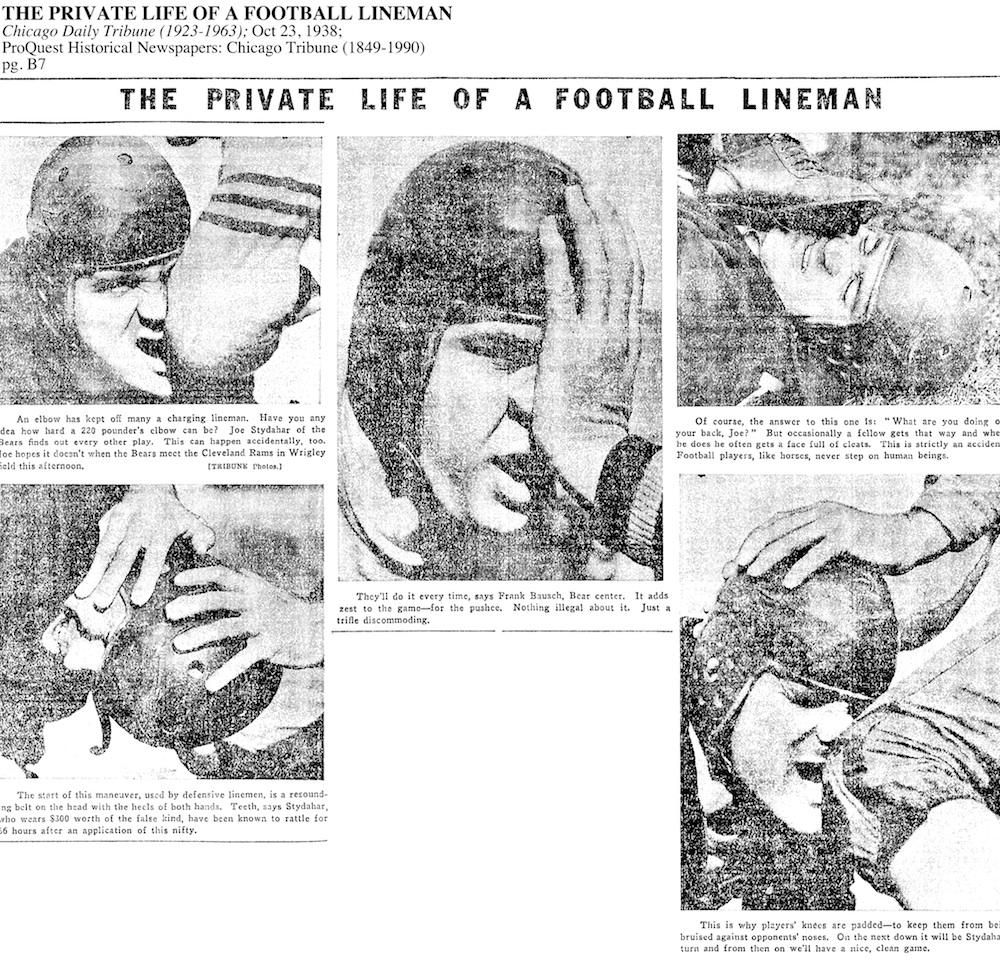The Vault is Slate’s history blog. Like us on Facebook, follow us on Twitter @slatevault, and find us on Tumblr. Find out more about what this space is all about here.
Among the images in the new book Chicago Portraits, this 1938 shot of Chicago Bears player Frank Bausch absorbing a palm to the face caught my eye. From the Chicago Tribune’s archives, it originally appeared in the layout below, showing Bausch, who played center, and Bears tackle Joe Stydahar demonstrating the impact of elbows, feet, knees, and hands on a lineman’s face.
The leather helmets that the players wore were little help against incursions such as these. Face masks wouldn’t be invented until the mid-1950s. Stydahar, for his part, sometimes elected to play without any helmet at all—a choice that was legal through 1943.
In the 1930s, players took black eyes and facial contusions to be part of the game, and the tone of the captions in this layout shows that fans reading the paper found the whole thing to be funny—a bloody form of slapstick humor. “This is why players’ knees are padded—to keep them from being bruised against opponents’ noses,” the writer remarked drily of Stydahar’s face making an uncomfortable connection with an opponent’s leg. About the image depicting Stydahar’s face under a player’s cleats, the writer snarked, “This is strictly an accident. Football players, like horses, never step on human beings.”
Tribune photo editor Marianne Mather told me over email that the original glass-plate negatives for the other images from the layout that didn’t make it into Chicago Portraits are probably somewhere in the newspaper’s basement, five floors below street level, but that the haphazard organization of the 60,000-image archive makes them hard to find. Stydahar’s hard-to-spell last name, she theorized, doesn’t help.

Courtesy of the Chicago Tribune.

Courtesy of the Chicago Tribune.